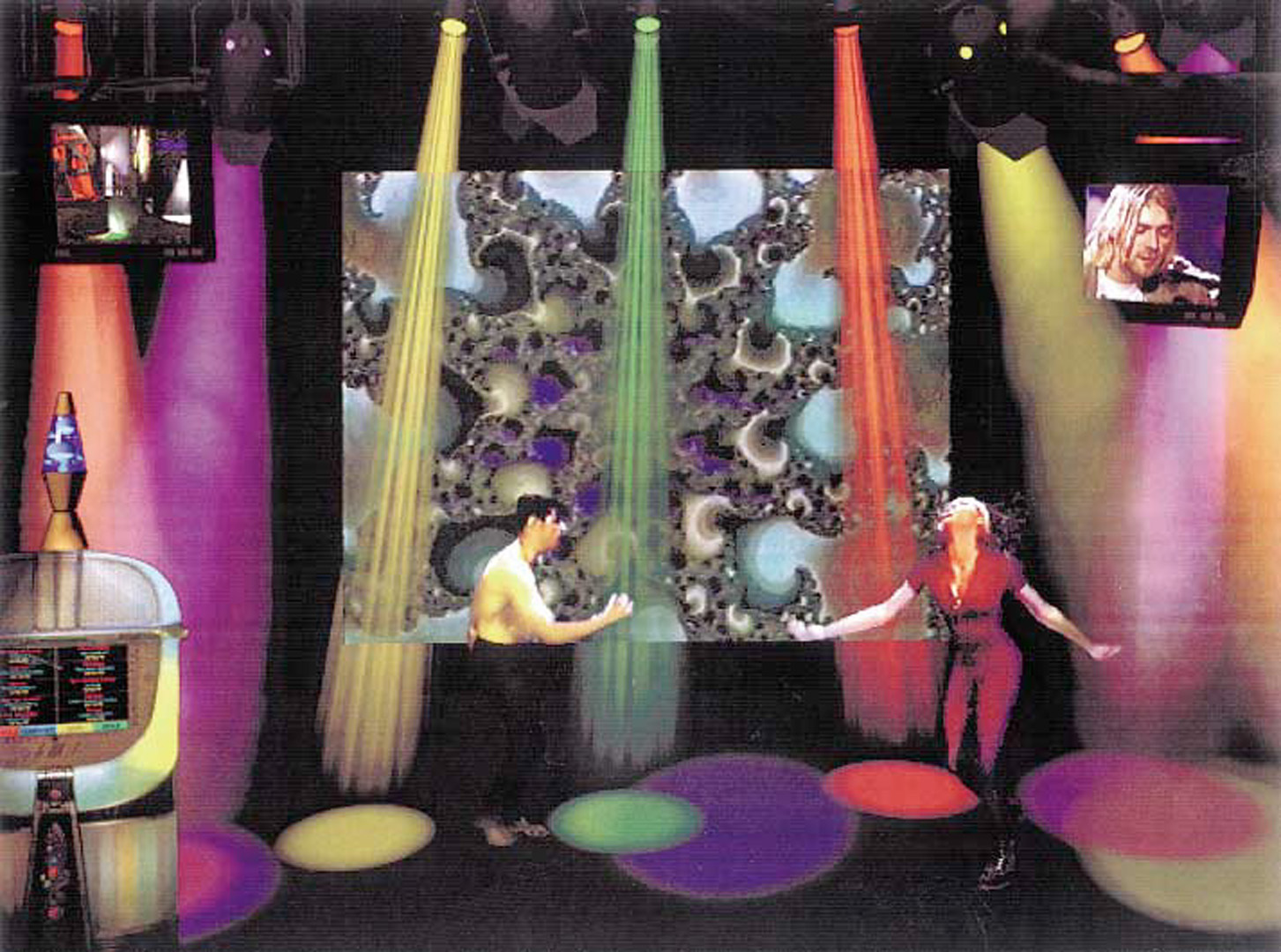“Digital Dixieland” by Kim, Szuecs and Grant
Conference:
- SIGGRAPH 1996
-
More from SIGGRAPH 1996:


Type(s):
Entry Number: 06
Title:
- Digital Dixieland
Program Title:
- Digital Bayou
Presenter(s):
Description:
Digital Dixieland is a multi-player jam session designed to allow creative people with different levels of musical expertise to play together in ahigh-quality musical/graphical environment. It is a location-based example of what anonline musical/social experience might look and sound likein the near future. It features a jukebox full of funky tunes, a Control Booth where aspiring DJs can create a real-time remix, a Graphic Generator for manipulating the visual ambiance, and a Trigger Tree for multimedia soloing. Up to six people can play together at any given time, and the results of their input are seen and heard in “near real-time” by everyone within the space.
The experience is implemented using time-stamped MIDI codes to transmit player events and musical information, and multiple client-based sequencers that play back the experience with a slight lag in absolute time while keeping the relative parts perfectly in sync. Just as musicians in a band play different instruments, participants in Digital Dixieland play different yet complementary roles. Musical beginners can play “DJ”: choose a song from the jukebox, and then select pre- recorded samples. The underlying system implements phrase-based timing quantization, so a smooth mix is guaranteed. More advanced musicians can solo: use their voice or any instrument to add their own MIDI compositions to the jukebox.
There are also several layers of graphics controls. Beginners can play “Graphics DJ”: use the Graphics Generator control panel to affect parameterized color-cycling background graphics in real-time. More adventurous souls can “solo” on the Trigger Tree: a fallen log embedded with a variety of MIDI triggers that control real-time graphic events in the foreground. These solo graphics are engineered to respond to the intensity, placement, and repetition of the graphic soloist, and can be set up to trigger sounds as well.




